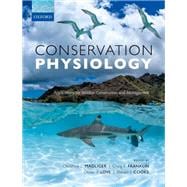Conservation physiology is a rapidly expanding, multidisciplinary field that utilizes physiological knowledge and tools to understand and solve conservation challenges. This novel text provides the first consolidated overview of its scope, purpose, and applications, with a focus on wildlife. It outlines the major avenues and advances by which conservation physiology is contributing to the monitoring, management, and restoration of wild animal populations. This book also defines opportunities for further growth in the field and identifies critical areas for future investigation. By using a series of global case studies, contributors illustrate how approaches from the conservation physiology toolbox can tackle a diverse range of conservation issues including the monitoring of environmental stress, predicting the impact of climate change, understanding disease dynamics, improving captive breeding, and reducing human-wildlife conflict. Moreover, by acting as practical road maps across a diversity of sub-disciplines, these case studies serve to increase the accessibility of this discipline to new researchers. The diversity of taxa, biological scales, and ecosystems highlighted illustrate the far-reaching nature of the discipline and allow readers to gain an appreciation for the purpose, value, applicability, and status of the field of conservation physiology.
Conservation Physiology is an accessible supplementary textbook suitable for graduate students, researchers, and practitioners in the fields of conservation science, eco-physiology, evolutionary and comparative physiology, natural resources management, ecosystem health, veterinary medicine, animal physiology, and ecology.








